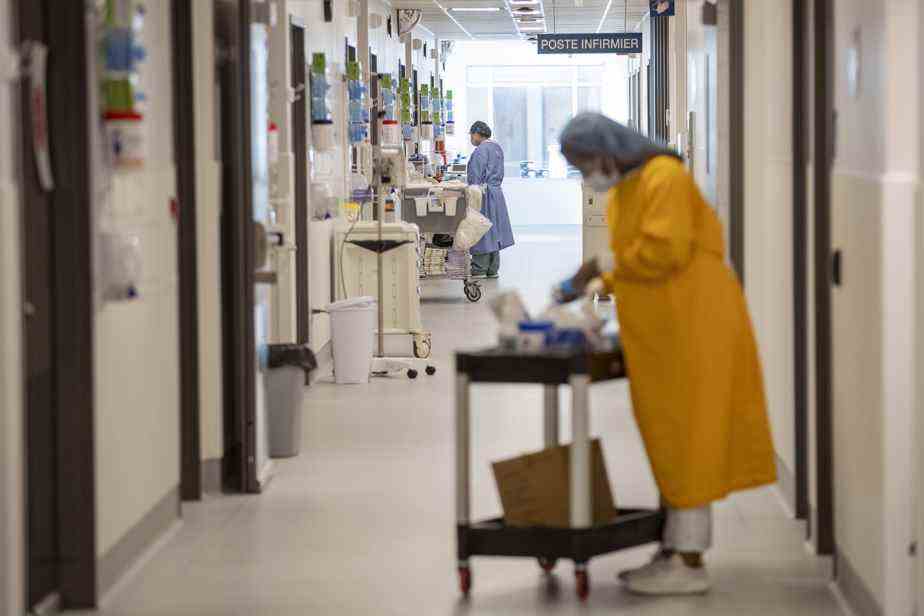After some lull in 2021, Quebec has seen a marked increase in deaths attributed to COVID-19 this year. The Omicron variant combined with the lifting of sanitary measures can explain this grim assessment, according to two experts.
The year 2022 ends with a heavy death toll in terms of deaths related to COVID-19 in the province. According to data from the National Institute of Public Health, 5,688 deaths have been attributed to the disease this year. This is significantly more than the 3,296 deaths recorded the previous year. The balance sheet nevertheless remains lower than the 8,502 deaths observed during the first year of the pandemic.

“The Omicron variant was less dangerous than the Delta, which preceded it, but it was so transmissible that it caused an impressive number of cases of infection which resulted in a higher proportion of deaths”, explains virologist Benoit Barbeau , professor in the department of biological sciences at the University of Quebec in Montreal.
Omicron has thus exploded the number of cases detected in 2022: no less than 633,802 have been confirmed, despite the limits imposed on screening. This is three times more than in the first year of the pandemic.
Vaccination has obviously helped to curb the disease, “but if there is a large proportion of people infected, there will still be a proportion who will die”, specifies Mr. Barbeau.
The vast majority of deaths from COVID-19 have been concentrated in people aged 70 and over. This group has remained the most vulnerable since the start of the pandemic, accounting for 87% of deaths again this year.
Sanitary measures and booster doses
The lifting of health measures in the first half of the year may also help explain these figures, believes the biochemist Nathalie Grandvaux, from the University of Montreal, who leads research on respiratory infections at the University of Montreal Hospital Center (CHUM). “People who were protected by health measures, in addition to vaccination, are no longer protected,” she summarizes.
Despite vaccination and the lower virulence of the new variants, “the most vulnerable people are always at greater risk of having serious symptoms, of being hospitalized and of dying,” adds Mr. Barbeau.
What’s more, the popularity of booster doses has waned over time, recalls Nathalie Grandvaux. Not to mention that “some more recent variants are able to escape the immune response given by the vaccine in vulnerable and immunosuppressed people”, she explains.
Seven children died due to illness
In 2022, Quebec deplored seven deaths attributed to COVID-19 in children under the age of 10. Only one child death had been reported during the first two years of the pandemic.
For meme Grandvaux, Quebec could adopt means to better prevent the disease, without returning to restrictive sanitary measures. For example, by improving its performance in terms of ventilation and air purification in buildings. Or by better informing the population about the need to wear a mask on certain occasions.
“We know that COVID has been with us for three years and that it is not going away. And that the impact of other respiratory viruses is greater than before, ”she underlines.
That’s a lot of deaths this year, for respiratory viruses. It’s really huge. Should we as a society accept that? I would say no. Because we have ways to protect ourselves, without infringing on our freedom.
Nathalie Grandvaux, biochemist at the University of Montreal, who leads research on respiratory infections at the CHUM
Excess mortality still present in 2022
The rise in COVID-19-related deaths has also been reflected in excess mortality. As of mid-October, Quebec was deploring 5.7% more deaths than expected. Again, this is less than the 7.7% excess mortality seen in 2020, but significantly more than in 2021.
Note that the Omicron variant is still heavily felt. It is also one of its sub-variants, BQ.1, which currently circulates the most, representing the majority of new cases.
The Omicron wave was also felt in hospitals. Quebec reported nearly 50,000 COVID-19-related hospitalizations this year, significantly more than the 15,000 recorded the previous year. The toll remains heavier even taking into account the fact that only 30 to 40% of hospitalizations were directly due to this virus.
